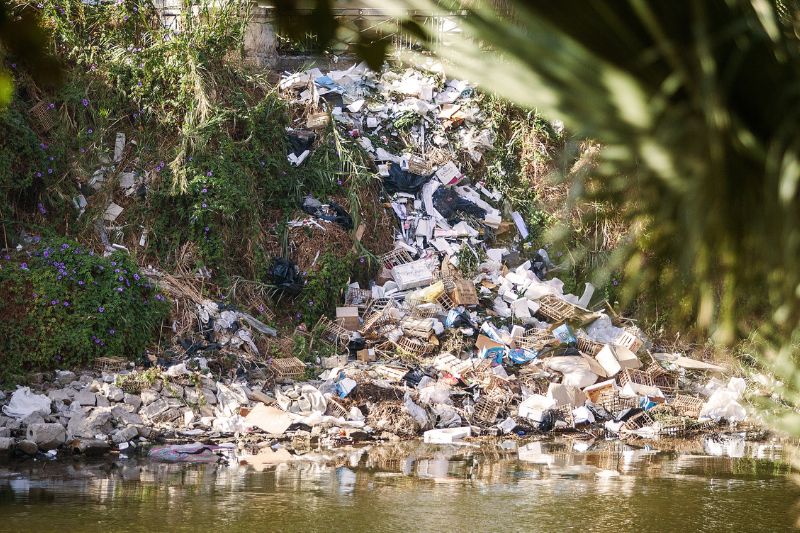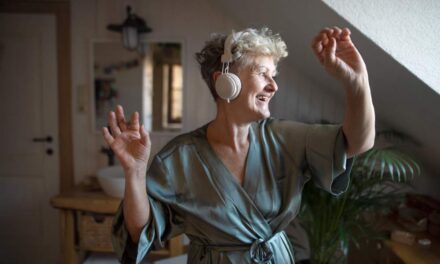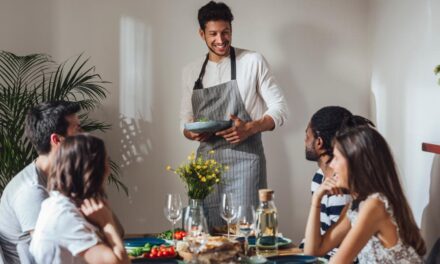‘Reduce and Reuse’ are the Real Solutions to the Planet’s Plastic Problem.
It may surprise you, but the vast majority of plastic you toss into your recycling bin each week actually ends up being dumped in a landfill.
According to a 2022 report from Greenpeace, an international non-profit devoted to raising awareness about environmental issues, only about 5-6% of U.S. plastics were recycled last year, down from a high of 9.5% in 2014 and 8.7% in 2018.
Considering that the world now produces more than 380 million metric tons of plastic every year, it’s easy to see how quickly waste can add up.
Single-use plastics have exploded in recent decades. In the U.S. alone, plastic waste generation has increased 263% since 1980 – from an average of 60 pounds per person per year to 218 pounds per person per year in 2018, according to a report from the Environmental Protection Agency.
Contrary to popular belief, not one single type of plastic food service item, including the polypropylene cup lids that Starbucks touts as recyclable, has ever been able to be recycled per the FTC Green Guide legal definition, according to the 2022 report, The Real Truth About the U.S. Plastics Recycling Rate.
Toxicity risks in recycled plastic prohibit “the vast majority of plastic products and packaging produced” from being recycled into food-grade packaging, the study further explains.
Without radical action to curb demand, increase product lifespans, and improve waste management and recyclability, the Organisation for Economic Co-operation and Development (OECD) estimates plastic pollution to triple by 2060.
In its report, Global Plastics Outlook: Policy Scenarios to 2060, several high-level solutions are presented to control the rising volume of plastics plaguing the environment, including:
- Taxes on plastics and plastic packaging
- Incentives to reuse and repair plastic items
- Targets for recycled content in new plastic products
- Extended producer responsibility (EPR) schemes
- Improved waste management infrastructure
- Increased litter collection rates
While these solutions could make a significant impact, they could take years – if not decades – to come to fruition.
But fortunately, individuals can implement changes into their everyday lives right away that can help cut down on consumption and create a future less cluttered by plastics.
What are Single-Use Plastics?
To cut single-use plastics out of our lives for good, we must first understand how it infiltrates our habits and households.
The National Resource Defense Council defines Single-Use Plastics as “goods that are made primarily from fossil fuel based chemicals (petrochemicals) and are meant to be disposed of right after use—often, in mere minutes. Single-use plastics are most commonly used for packaging and serviceware, such as bottles, wrappers, straws and bags.”
The popularity of single-use plastics skyrocketed in the 1970s when traditional paper or glass packaging was overwhelmingly replaced with lighter or more durable and affordable plastic alternatives. Since the 1950s, 8.3 billion metric tons of plastics have been produced, half of that in the past 15 years alone.
While using a plastic fork on your lunch break may seem harmless, the total number of single-use utensils that end up in landfills each year is staggering – 40 billion plastic forks, spoons, and knives. On top of that, the U.S. alone tosses 500 million plastic straws every day, according to Habits of Waste.
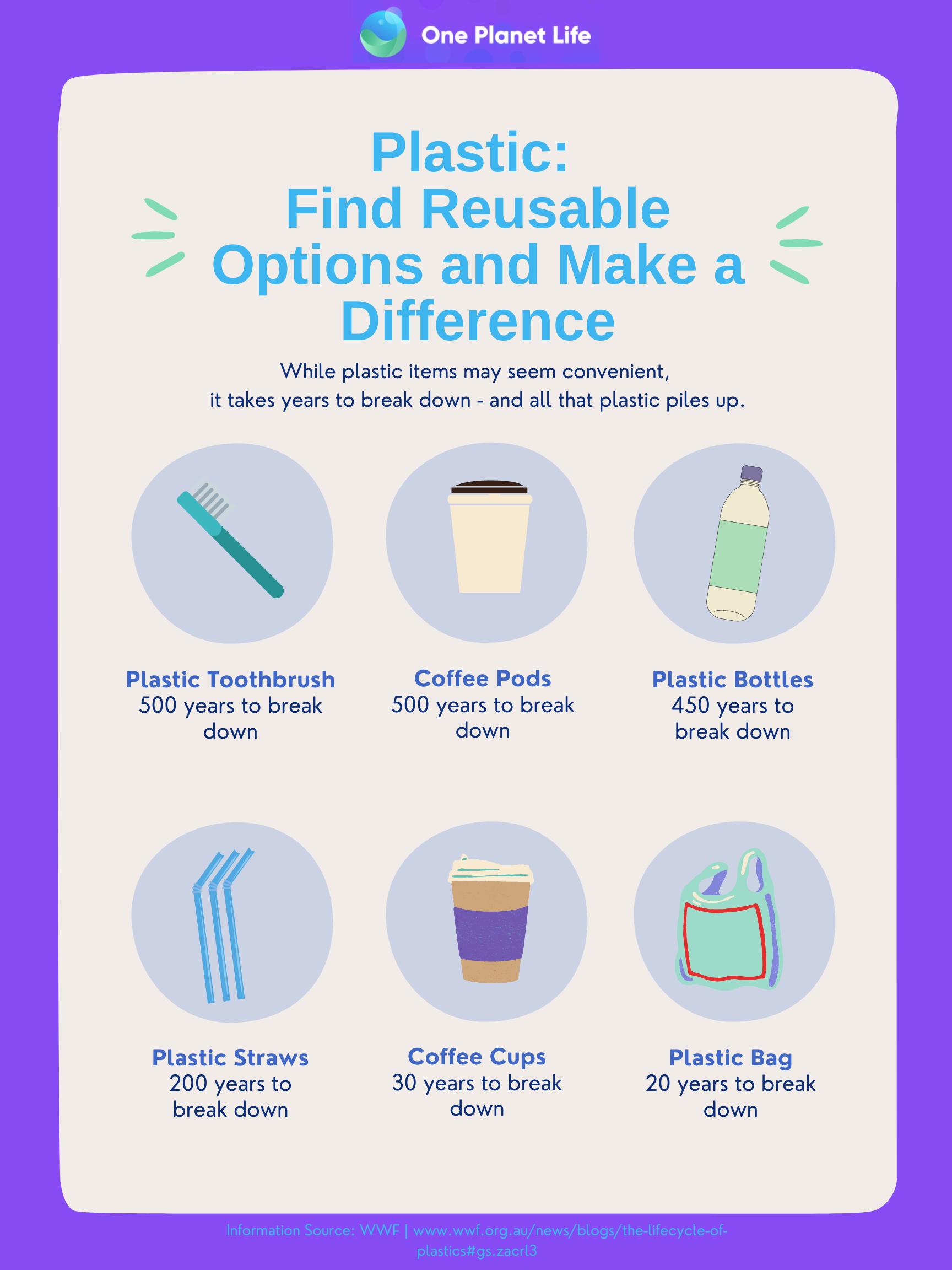
How Can I Cut My Dependency on Single-Use Plastics?
Changing habits isn’t always easy. However, the team at One Planet Life shares their personal journeys on how they shifted focus to living more sustainably, hoping to offer a few tips on how to make the switch.
Lorie Buckingham, the founder of One Planet Life, started her journey by eliminating single-use plastic from her life.
“It was easy when going to the grocery store, as I would keep my reusable shopping bags and my reusable produce bags ready to go in my entryway closet,” she said. “I grab the set and head off to the grocery store or farmers market. I love coming home with fruit and vegetables not covered in plastic and without a pile of waste.”
Making spur-of-the-moment purchases still plagued her with waste. “The problem was solved when I started carrying a foldable, reusable bag in my purse or backpack,” she said. “Voila, I pull it out and, once again, get home with my purchase – no single-use plastic bag needed.” Shopping weekly, Buckingham estimates saving at least 600 plastic bags per year.
Switching to a reusable water bottle, on the other hand, was a bit more difficult. “I am picky about the taste of my water,” she shared. “This was resolved with a countertop Berkey Water Filtration system, glass bottles that fit perfectly in the refrigerator, and several to-go water bottles. Now, I have great-tasting water at home and on the go.” Since changing her habits four years ago, Buckingham estimates saving over 4,000 water bottles from going to the landfill.
Yvonne Dwyer, One Planet Life’s Naturalist, switched to a refillable water bottle after seeing how many empty plastic water bottles ended up in her weekly recycle bin.
“It was time for a change,” she said. “I learned that not all plastic is recycled, and the expense of paying for bottled water just seemed crazy. Instead, I could use my reusable hard plastic tumbler cup, which I eventually changed to a Nalgene bottle, and then to Hydro Flask and Corkcicle bottles, which keep water cool. My Hydro Flask, Corkcicle, and Yeti bottles go with me on whatever adventure I pursue.”
Amy Bates, CMO of One Planet Life, reduced dependency on single-use plastics after seeing the sheer volume of plastic her family was throwing away.
“I made three simple changes that significantly reduced our plastic waste and saved money and effort,” she said. “First, I switched to reusable k-cups to make our coffee. Not only could we enjoy any coffee, but it was also much less expensive. Second, I stopped buying plastic ziplock bags for snacks and storage. Now, I use reusable snack and storage bags, I prefer the Russbe brand, and they work great. I wash them in the dishwasher and enjoy another cost savings! Finally, we use our reusable water bottles daily, for travel, and while on our boat at the lake.”
Her family went from buying a couple of cases of water in plastic bottles each weekend to using quality, insulated bottles on their boating trips.
“It’s much easier to know which drink is yours, and we significantly decreased the amount of waste to clear off the boat at the end of the day,” she shared. “These joyful changes were easy to make and delivered many benefits.”
As the OPL team shared, switching to reusable options often carries more benefits than just reducing waste.
To help make this switch easier for those on their journey to live a more sustainable life, One Planet Life is launching its very own e-store.
Shoppers will find eco-friendly, reusable products to replace single-use options, including:
- A Travel Utensils Set in Cloth Pouch, with a glass straw and brush, fork, knife, spoon, chopsticks, and a cloth napkin
- Foldable and reversible Tote Bags
- Larger Canvas Tote Bags
- Insulated Reusable Water Bottles
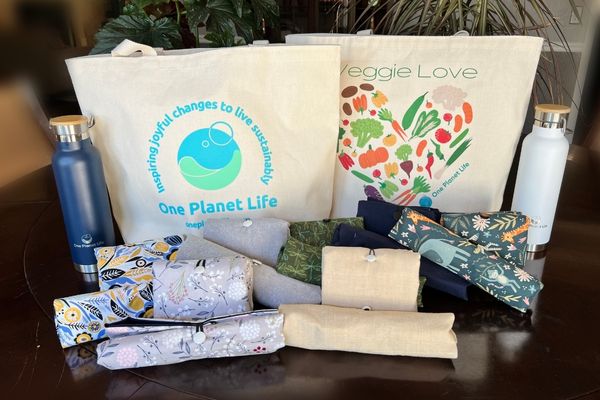
With a reusable water bottle alone, two fill-ups daily would save 720 plastic bottles per year or 0.63 pounds of carbon emissions.
If communities worked together to lower their dependency on single-use everyday items by substituting reusable alternatives, the hope of a cleaner future unmarred by mountains of plastics could become a reality.
Learn more about America’s recycling programs:

Written by Carley Kimball
Freelance Journalist and OPL Content Contributor
“I’ve always tried to implement planet-friendly practices in my life but didn’t quite realize just how much of an impact individuals can make until I was introduced to One Planet Life. I’m so excited to be able to utilize my professional skills to contribute valuable information and positive personal experiences to help make the world a better place.”

